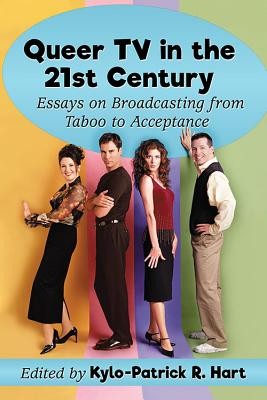
- We will send in 10–14 business days.
- Publisher: McFarland and Company, Inc.
- Year: 2016
- Pages: 232
- ISBN-10: 1476664404
- ISBN-13: 9781476664408
- Format: 15.2 x 22.9 x 1.5 cm, softcover
- Language: English
- SAVE -10% with code: EXTRA
Queer TV in the 21st Century (e-book) (used book) | bookbook.eu
Reviews
Description
Television has historically been largely ineffective at representing queerness in its various forms. In the 21st century, however, as same-sex couples have seen increasing mainstream acceptance, and a broader range of queer characters has appeared in the media, it seems natural to assume TV portrayals of queerness have become more enlightened. But have they? This collection of fresh essays analyzes queerness as depicted on TV from 2000 to the present. Examining Buffy the Vampire Slayer, The Ellen DeGeneres Show, The L Word, Modern Family, The New Normal, Queer as Folk, Queer Eye for the Straight Guy, RuPaul's Drag Race, Spartacus and Will & Grace, among other series, the contributors demonstrate that queer characters in general have achieved visibility at the expense of minimizing much of their queerness--with a few eye-opening exceptions.
EXTRA 10 % discount with code: EXTRA
The promotion ends in 18d.11:02:39
The discount code is valid when purchasing from 10 €. Discounts do not stack.
- Publisher: McFarland and Company, Inc.
- Year: 2016
- Pages: 232
- ISBN-10: 1476664404
- ISBN-13: 9781476664408
- Format: 15.2 x 22.9 x 1.5 cm, softcover
- Language: English English
Television has historically been largely ineffective at representing queerness in its various forms. In the 21st century, however, as same-sex couples have seen increasing mainstream acceptance, and a broader range of queer characters has appeared in the media, it seems natural to assume TV portrayals of queerness have become more enlightened. But have they? This collection of fresh essays analyzes queerness as depicted on TV from 2000 to the present. Examining Buffy the Vampire Slayer, The Ellen DeGeneres Show, The L Word, Modern Family, The New Normal, Queer as Folk, Queer Eye for the Straight Guy, RuPaul's Drag Race, Spartacus and Will & Grace, among other series, the contributors demonstrate that queer characters in general have achieved visibility at the expense of minimizing much of their queerness--with a few eye-opening exceptions.


Reviews